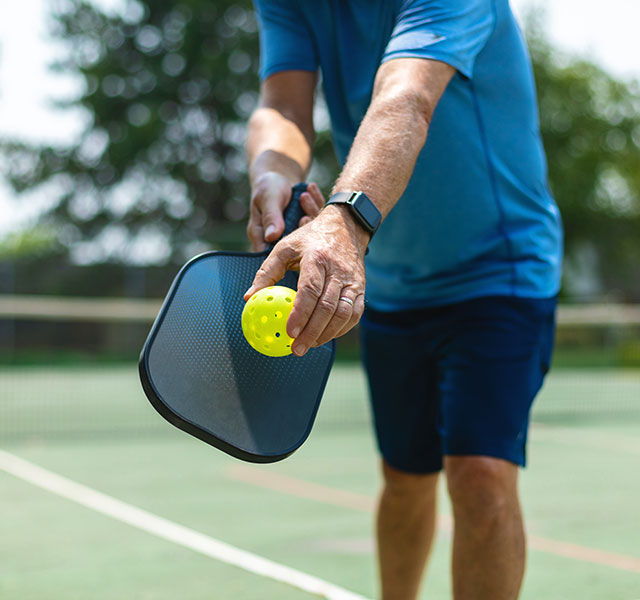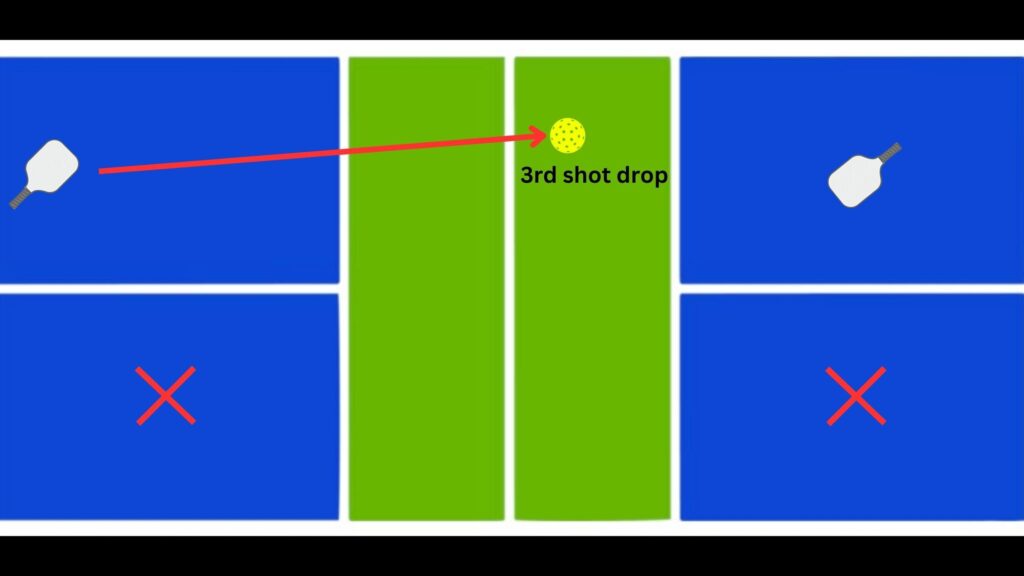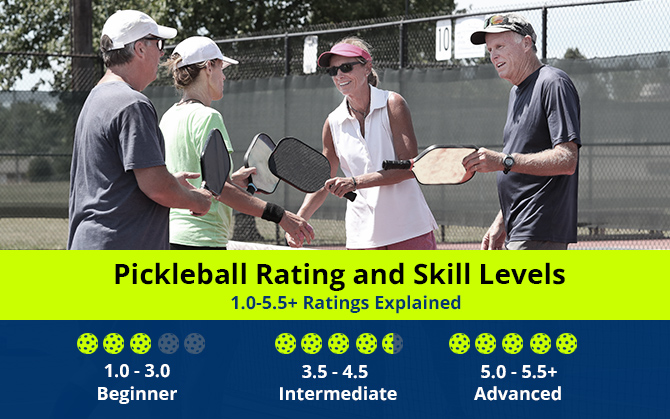The game of Pickleball is approximately 56 years old. Originally invented in 1965 by Joel Pritchard, Bill Bell, and Barney McCallum.
Pickleball is a popular paddle sport that combines elements of tennis, badminton, and table tennis. It is played on a court similar to a badminton court, with a net placed at the center. The game is played with a paddle and a perforated plastic ball, which is slightly smaller than a tennis ball.
Pickleball has gained popularity over the years, particularly among older adults, due to its low impact on the joints and its simple rules. The game has attracted a wide range of players, from recreational enthusiasts to competitive athletes. In recent years, it has also become popular among younger generations as a fun and social activity. Despite being a relatively new sport, Pickleball has quickly grown in popularity and is now played in over 6,000 locations across the United States alone. Its easy-to-learn nature and inclusive playing environment have contributed to its widespread appeal.

Credit: en.wikipedia.org
The Origins Of Pickleball
Pickleball, a paddle sport that combines elements of tennis, badminton, and table tennis, has become increasingly popular in recent years. The game, which is played on a smaller court with a lower net, is suitable for players of all ages and skill levels. But how exactly did this unique sport come to be? To answer that question, let’s delve into the origins of pickleball.
Invention By Joel Pritchard
In the summer of 1965, Joel Pritchard, a congressman from Washington, and his friend Bill Bell returned home to find their families bored and restless. In search of a way to entertain themselves, they attempted to set up a game of badminton but couldn’t find all the necessary equipment. Undeterred, they improvised with a whiffle ball, lowered badminton net, and some paddles, thus inventing the game of pickleball right in Pritchard’s backyard.
Naming The Game
The origins of the game’s name are a bit less clear. Some accounts suggest that the game was named after the Pritchard family dog, Pickles, who would chase after the errant balls. However, according to Joan Pritchard, Joel’s wife, the dog Pickles actually came along several years after the game was invented. Regardless of its true origins, the name “pickleball” stuck and became synonymous with this new and exciting sport.
Early Growth And Popularity
Pickleball’s popularity began to grow and spread beyond the Pritchard’s backyard. The game’s accessibility, low learning curve, and fun, social nature helped it gain traction, particularly among the older population. By the 1970s, pickleball was being played in various locations across the United States, and in 1976, the first pickleball tournament was held in Washington. As its popularity continued to soar, the sport began to attract players of all ages and skill levels, truly solidifying its place in the world of recreational sports.

Credit: www.justpaddles.com
The Spread Of Pickleball
Pickleball, a popular paddle sport, has been gaining traction not only in the United States but also around the world. As more people discover the joy of this exciting game, it has rapidly spread to different countries, captivating players of all ages. The global appeal of pickleball can be attributed to its easy-to-learn nature, which makes it accessible for beginners, while the fast-paced action guarantees excitement for more experienced players. In this post, we will explore the growth of pickleball around the globe, focusing on the introduction of the game in other countries and the emergence of international championships.
Introduction To Other Countries
The enthusiastic reception of pickleball has led to its introduction in various countries across the world. Despite its roots in the United States, the game has not been confined to its birthplace. It has, instead, crossed borders, bringing its unique charm to different parts of the globe. Countries such as Canada, the United Kingdom, Australia, and Spain have all embraced pickleball, setting up dedicated facilities and clubs where players can come together and enjoy the game.
One of the main reasons for pickleball’s global popularity is its adaptability to different settings. The game can be played both indoors and outdoors, allowing players to enjoy pickleball year-round, regardless of weather conditions. This versatility has made it a perfect fit for countries with diverse climates, ensuring that enthusiasts can always engage in this addictive sport.
As pickleball continues to make its way into new territories, it has managed to attract players of all ages and backgrounds. The game’s simplicity appeals to beginners, creating a low barrier to entry for those looking to try their hand at a new sport. Additionally, the social aspect of pickleball fosters a sense of community, offering players the chance to connect with others while staying active and having fun.
International Championships
The growing interest in pickleball has led to the establishment of international championships, where players from different countries come together to compete at the highest level. These global gatherings not only showcase the talent and skill of pickleball athletes but also foster a sense of camaraderie among participants.
In recent years, events like the US Open Pickleball Championships and the International Federation of Pickleball (IFP) World Championships have been drawing participants from around the world. These prestigious tournaments provide an opportunity for players to showcase their abilities and test their mettle against top-level competition, further boosting the popularity and recognition of pickleball internationally.
As pickleball’s reputation continues to grow, more countries are expected to participate in these international championships, leading to a bright future for the sport on a global scale. The spread of pickleball across different nations demonstrates its universal appeal and the joy it brings to athletes and enthusiasts alike.
Pickleball’s Age Groups And Demographics
Pickleball is a game that appeals to a wide range of age groups, making it a popular sport for people of all ages. The game has gained traction among both youth and older adults, creating a diverse and inclusive community of players. Let’s delve into the age groups and demographics that contribute to the growing popularity of pickleball.
Youth Participation
Pickleball’s accessibility and ease of learning have made it an attractive option for young players. Many schools and youth organizations have incorporated pickleball into their physical education programs, leading to an increase in youth participation. The game’s adaptability to different skill levels appeals to kids and teenagers, fostering a sense of community and camaraderie among young players.
Adoption By Older Adults
The low-impact nature of pickleball and the option to play doubles make it particularly suitable for older adults. Retirees and seniors have embraced the sport as a way to stay active and socialize. The slower pace and smaller court size allow for an enjoyable experience for older players, contributing to the surge in pickleball’s popularity within this demographic.
Appeal To All Ages
Pickleball is unique in its ability to attract players of all ages. Its competitive yet inclusive nature creates a welcoming environment for individuals of varying fitness levels and ages. The sport’s emphasis on teamwork and friendly competition fosters intergenerational connections, bridging the gap between different age groups. Its universal appeal has led to a diverse participant base, establishing pickleball as a sport for everyone.
Pickleball’s Impact On Active Lifestyles
Pickleball, an increasingly popular game, has made a significant impact on active lifestyles. Despite its relatively recent rise, Pickleball was invented in 1965, making it over half a century old. Its low-impact yet high-intensity nature has attracted people of all ages, contributing to its growing popularity in the realm of physical activity.
Health And Fitness Benefits
Engaging in Pickleball offers a plethora of health and fitness benefits for players of all ages. This fast-paced and dynamic sport provides a total body workout, helping individuals improve their cardiovascular endurance, agility, balance, and coordination. Players constantly move, jump, and pivot, which helps to increase their overall stamina and strength.
Pickleball also gives a solid workout for the upper body, as players use their arms, shoulders, and wrists to swing the paddle and hit the ball. This low-impact activity reduces the risk of joint and muscle strain while promoting better flexibility and range of motion. The combination of aerobic and anaerobic movements during a Pickleball game makes it an excellent choice for those looking to improve their overall physical fitness levels.
Social And Community Connections
Pickleball is more than just a game; it’s a social and community-oriented activity that fosters connections and friendships. Whether playing at a community center, local park, or dedicated Pickleball facility, players have the opportunity to meet other enthusiasts who share the same passion for the sport. This social aspect helps combat feelings of loneliness and isolation, especially for individuals who may be new to an area or seeking to expand their social circle.
Pickleball can bring people together from various backgrounds, ages, and skill levels, creating a friendly and inclusive atmosphere. The game’s slower pace compared to other racket sports allows players to engage in conversations, build relationships, and create lasting bonds. Many Pickleball groups and clubs also organize social events and tournaments, further enhancing the sense of community and camaraderie.

Credit: www.henryford.com
The Future Of Pickleball
Pickleball, a popular racquet sport, has been around since the mid-1960s. But how does the future look for this fast-paced game? In this article, we explore the potential growth and expansion of pickleball, as well as its chances of becoming an Olympic sport.
Pickleball has been experiencing a surge in popularity in recent years. With its easy-to-learn rules, low-impact nature, and suitability for all age groups, the player base of pickleball has been steadily growing. In fact, there are currently millions of people actively playing pickleball around the world.
The continued growth of pickleball can be attributed to various factors. Firstly, its accessibility makes it an appealing sport for beginners and people of all fitness levels. Whether you’re a seasoned athlete or just looking for a fun way to stay active, pickleball offers something for everyone.
Additionally, pickleball is highly adaptable and can be played on various surfaces, such as indoor courts, outdoor courts, and even in gymnasiums. This versatility allows the game to be played in different settings, making it more accessible for individuals and communities.
The sport has also seen a significant increase in pickleball tournaments at local, regional, and national levels. This has not only provided a platform for competitive play but has also contributed to the visibility and growth of the sport.
As pickleball continues to gain popularity, there is increasing speculation about its potential as an Olympic sport. Several countries have already formed pickleball federations and associations, indicating a growing interest in competitive play and international recognition.
Many pickleball enthusiasts believe that the sport meets the criteria for Olympic inclusion. It offers thrilling gameplay with a unique blend of elements from tennis, badminton, and table tennis, making it exciting for both players and spectators.
In recent years, pickleball has been featured as a demonstration sport in various multi-sport events, demonstrating its potential as an Olympic sport. These appearances have allowed the international sporting community to witness the skill, athleticism, and sportsmanship involved in pickleball.
If pickleball were to become an Olympic sport, it would likely attract even more players and viewership worldwide. As we’ve seen with other sports included in the Olympics, such as beach volleyball and snowboarding, the exposure and prestige of the Games can significantly boost a sport’s popularity and development.
However, the road to becoming an Olympic sport is not without its challenges. Various factors, including the availability of suitable venues, international standardization of rules, and the recognition and support from national Olympic committees, need to be considered.
Frequently Asked Questions
When Did People Start Playing Pickleball?
People started playing pickleball in the mid-1960s.
Why Did They Call It Pickleball?
Pickleball got its name from the family dog, Pickles, who would chase after the ball. It is a combination of various sports and was invented by Joel Pritchard and his friends in 1965.
How Long Has Professional Pickleball Been Around?
Professional pickleball has been around for approximately 20 years, gaining popularity since the early 2000s.
Was Pickleball Invented For The Elderly?
No, pickleball was not invented specifically for the elderly. This sport can be enjoyed by people of all ages and fitness levels. It combines elements of tennis, table tennis, and badminton, providing an engaging and low-impact activity for players across generations.
Conclusion
The origins of pickleball date back to the mid-1960s, making it a relatively young sport. Despite its youth, pickleball has grown in popularity and continues to attract players of all ages. The game’s unique blend of skill and accessibility will likely ensure its longevity for years to come.
Neil jacobson is an avid Pickleball enthusiast, writer, and coach dedicated to sharing the joy and intricacies of the sport. With 6 years of experience on the court and a passion for teaching, Courtney brings a unique perspective to his writing, offering practical insights and strategies for players of all levels. As a certified Pickleball coach, his mission is to inspire and empower individuals to excel in the game while fostering a sense of community within the Pickleball world. Through his articles, guides, and coaching sessions, Neil aims to elevate the playing experience and share the infectious enthusiasm that defines the Pickleball community.



